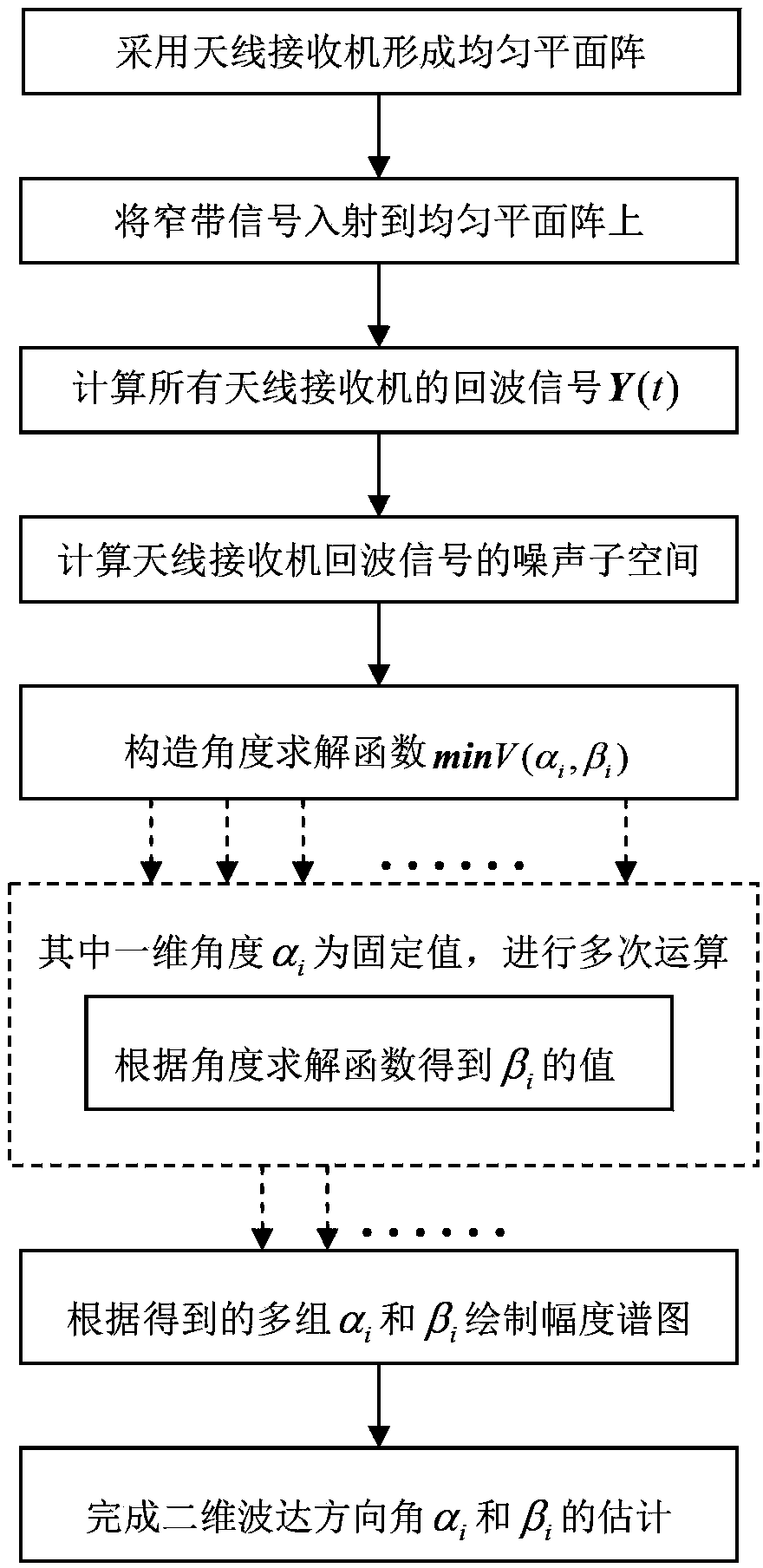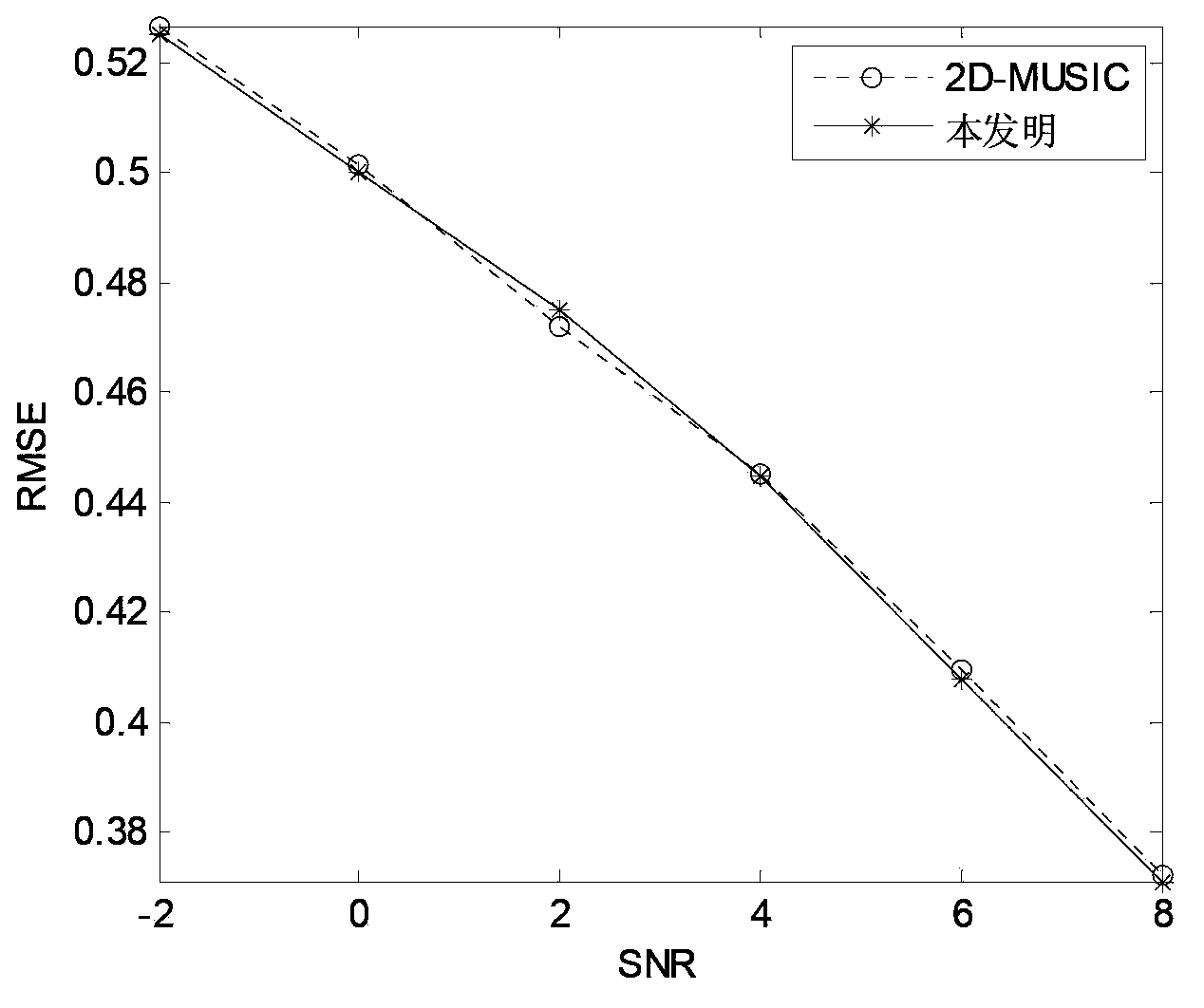Two-dimensional DOA (direction of arrival) angle estimation method based on antenna uniform planar array
A planar array and two-dimensional wave technology, which is applied in the field of signal processing, can solve the problems of costing computation, not making full use of the multi-dimensional information of the array to receive signals, and matching angles with excessive computation, so as to reduce computation complexity and avoid two-dimensional Angle search or angle pairing process, the effect of improving the calculation speed
- Summary
- Abstract
- Description
- Claims
- Application Information
AI Technical Summary
Problems solved by technology
Method used
Image
Examples
Embodiment Construction
[0030] Refer to figure 1 , The implementation steps of the two-dimensional direction of arrival angle estimation of the present invention are as follows:
[0031] Step 1: Use the antenna receiver to form a uniform plane array.
[0032] Place 1 antenna receiver every interval d in the x-axis direction, and place N in total, which is called a 1-row antenna receiver; place 1 antenna receiver every interval d in the y-axis direction, and place a total of M rows, Form a uniform plane array of antennas with a total number of antenna receivers of NM, where N≥2, M≥2, 0 <d≤λ / 2, λ is the wavelength of the incident narrowband signal;
[0033] Step 2: The narrowband signal is incident on the uniform plane array of the antenna.
[0034] Suppose the number of narrowband signals incident on the uniform plane array of the antenna is I, and the signals are not correlated, the signal form is s i (t) means;
[0035] The narrowband signal meets the following conditions:
[0036] B·ΔT max < <1,
[0037] Whe...
PUM
 Login to View More
Login to View More Abstract
Description
Claims
Application Information
 Login to View More
Login to View More - R&D
- Intellectual Property
- Life Sciences
- Materials
- Tech Scout
- Unparalleled Data Quality
- Higher Quality Content
- 60% Fewer Hallucinations
Browse by: Latest US Patents, China's latest patents, Technical Efficacy Thesaurus, Application Domain, Technology Topic, Popular Technical Reports.
© 2025 PatSnap. All rights reserved.Legal|Privacy policy|Modern Slavery Act Transparency Statement|Sitemap|About US| Contact US: help@patsnap.com



